Features
Rolling out holistic solution to perennial problem of laws’ delays
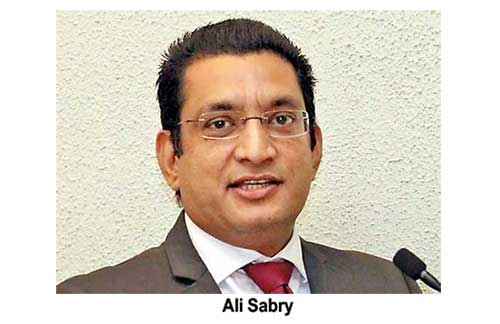
Speech delivered by
M.U.M. Ali Sabry, PC
Minister of Justice
at the 47th Annual Convocation of the Bar Association of Sri Lanka on the 27t March 2021 at the BMICH.
Your Lordship the Chief Justice, Hon. Attorney General, Your Lordships the judges of the superior courts, the President of the Bar Association and outgoing President, Committee members and my learned friends.
It is a pleasure to be here today, amongst the familiar faces I am used to seeing across the bar table for many years.
Firstly, I would like to extend my warmest congratulations to Mr. Saliya Peiris, President’s Counsel who won the election as well as the newly appointed members of the Exco. The bar has chosen you as its leader, and I wish you the strength and the determination in performing this important task. You carry on your shoulders the responsibility of guiding this noble profession in the years to come, and I have no doubt that you will continue to maintain the traditions of the bar whilst ensuring that the bar remains apolitical and stands up for the rule of law without fear or favour.
The last year has been a tough one, to say the least, and it is commendable that the BASL throughout this period was actively involved in finding solutions to ongoing problems, and was supportive of its members, the judicial administrative staff and litigants. You have done a great job, and I hope to see the good work continue.
The legal profession is one which has no equal. I say this because, there rests on the profession and with it the Bar Association a heavy responsibility to the citizens of this country, and to the country itself. It has a vital role in protecting the rule of law, maintaining the independence of the judiciary and protecting the sovereignty of the country. This responsibility is not a passive one, it is a positive one where there is a need for the legal profession to be at the forefront of positive social change.
To put this in context, as Judge Sanji Monageng, the First Vice-President of the International Criminal Court, in a speech delivered at the The Hague, on 20 November 2012 stated that:
“…the rule of law and the proper administration of justice, of which an independent judiciary and legal profession are prerequisites, play a central role in the promotion and protection of human rights.”
This role has been universally recognized even by the United Nations as enunciated in Principle 16 of the United Nations Basic Principles on the Role of Lawyers.
Lawyers therefore form a core part of the judicial arm of the state. It would be easy to assume by its very wording that the judicial arm consists of judges and courts, but that assumption would be far from the truth. After all, what would be the use of the biggest courthouses or the best judges if the parties can’t be heard? Lawyers are by their very nature officers of court and on many levels the gatekeepers to justice.
The journal article titled “ABA Canons of Professional Ethics” published by the American Bar Association, addressed this very important point. It stated that:
“the stability of Courts and of all departments of government rests upon the approval of the people, it is peculiarly essential that the system for establishing and dispensing Justice be developed to a high point of efficiency and so maintained that the public shall have absolute confidence in the integrity and impartiality of its administration. The future of the Republic, to a great extent, depends upon our maintenance of Justice pure and unsullied.
Thus, the role of a lawyer is not merely one of representing or advising clients for payment. It comes with a high level of responsibility, an overriding need for ethical behaviour, a sense of justice and a national duty. There is an overarching need for the public to have confidence and trust that justice is dispensed from the justice system. In this context, the legal profession has a duty of instilling and maintaining this public confidence and trust in the system.
Looking at the rich history of the legal profession in Sri Lanka, we can be proud of its independence, its contribution to legal jurisprudence and the persons who have come from it over the decades. We have produced world-class lawyers, jurists and judges and have contributed at a disproportionately high level to international law considering the size of our profession.
It would be easy to rest on these laurels and reminisce, and also to be content with the legal profession and the justice administration system as it currently stands, but I believe we need to have a serious reality check. I wasn’t certain that today would be the most suitable place to bring this up, but this is the first opportunity I am getting to talk to my colleagues, the representatives of the judiciary and the official and unofficial bar at the same forum. Therefore, I did not want to miss this opportunity to discuss what, in my opinion, should be front and centre of our journey over the next few years.
As I have mentioned before,
-the average time to enforce a contract in Sri Lanka is 1318 days
-We have been ranked 161 out of 189 countries for the enforcement of contracts
-Our legal system is ranked 5th out of 8 in South Asia.
-Land, Partition and Testamentary cases on average take a generation to be settled.
-A criminal trial takes on average 9 ½ years to conclude in the High Court.
-A criminal matter on average will take a year to be fixed for appeal and 3-4 years for the said appeal to be completed.
We are all very aware that the underlying issues in delay, amongst other matters, is the sheer number of cases before court, and the massive backlog which in turn has resulted in litigation stagnating.
At the end of 2019, there were a total of 766,784 cases pending in our courts, and we had approximately 350 judges to hear these cases. Let us ask ourselves the obvious question – how on earth is an individual judge supposed to manage such a caseload? Even if they were to work 16 hours a day, 7 days a week there would be no logical way to get through this backlog within any reasonable period of time. The outdated laws and the lack of appetite for innovative steps and technological advancement has only served to make matters worse.
This overburdening of judges is reflected in our score on the ‘judges per 1 million population’ index. Countries such as Russia have 242 judges per 1 million population, Germany has 230 and Thailand has 68. India which has been relentlessly criticized for its low number of judges has 20 per million. And our number? 15. Just 15 judges per million population. A reflection of how much of a monumental and humanly impossible task we are expecting our current judiciary to achieve.
These indicators are not just an academic exercise – they reflect the ground reality of the current state of the administration of justice in our country. On a domestic level, the results are quite obvious – how many times have we advised clients at consultations that they need to be ready for a ‘long-haul’ case, and in response to the question ‘how long?’ we have replied ‘years.’ We have been within this system for as long as we can remember, the fact that a case takes years, or the fact that the dates between two trial dates is months does not seem the least bit abnormal to us. We have become desensitized to the plight of our litigants and we do not feel the sting unless it’s one of our own personal cases.
This level of delay and inefficiency are not only inconvenient and unfair to the citizens, they have far reaching implications for the future of this Country. Investors are apprehensive about trusting their money in a place with high risk of loss in case of a dispute. Market research of the region prior to any investment would result in investors flocking to the countries high on these indexes, thus we are losing in the long term and we are losing big. Our neighbours understood this early on and started their own competitive drive to rank higher on these indexes and bring the issue of delay and inefficiency of the justice system under control. Take Pakistan for example – in 2018, they were ranked 147 in the ease of doing business index. By 2019, they managed to get to 136. However, from 2019 to 2020 they jumped a staggering 28 places and were ranked 108. This is a clear display of how commitment, focus and drive towards fixing the legal system can result in unthinkable results within a short period of time.
India too has been taking some dynamic strides in its modernization drive. It adopted e-filing earlier on during the pandemic and has commenced a push for digitization of its judicial administration system. In terms of corporate or connected litigation, the Ministry of Corporate Affairs has digitized its entire process and database to the extent that certified copies of Company documents can be obtained through an online process which is admissible evidence in Court.
The United Kingdom is establishing Online Courts which initially was due to the pandemic but will most certainly continue to develop and grow. They also started night sessions for Court hearings to clear the backlog.
In the last few years, Chinese courts have seen rapid developments in online dispute resolution platforms, specialized Internet courts, and the wide use of Artificial Intelligence across the case management and adjudication process in civil and criminal proceedings. They have also adopted other new technologies such as distributed ledgers, blockchain and smart contracts solutions which have been developed and rolled out in specialized courts.
Over the course of 2019, the Estonian Ministry of Justice developed and piloted an artificial intelligence software to hear and decide on small claims disputes less than €7,000.
This is the rapid level at which the other countries have progressed whilst we are still at a stage where cases in the District Court get postponed on multiple occasions, sometimes over a year because summons had not been served on the Post Office so that an employee can give evidence on one postal article receipt to establish that the letter of demand had been sent. Is that not, for lack of a better word, absurd?
Ever since I have taken over the office of the Minister of Justice one common issue is that most of who I meet, across the social and economic spectrum has a complaint about a case which has been pending for years. The Ministry is inundated almost every day with letters by litigants from all over the country complaining about laws’ delays.
We have been comfortable with the status quo for decades, and it’s time we realized that the status quo is just not working. Not only is it not giving any positive results, its actually dragging us backwards by destroying the public trust and confidence that is a pre-requisite for the judicial administration system of the country to function.
We must find a way out of this. It is time that we in Sri Lanka take a page out the books of these countries. It is encouraging that over the last few months we have taken steps towards achieving this. The E-hearing rules issued by the Supreme Court, the provisions made for E-filing as well as the adoption of giving bail online by the Magistrate’s Court are important steps in the right direction. This, however, is not going to be enough. It is vital that we look at a complete structural change from end to end and roll it out in a targeted and efficient way. We have to stop looking at the legal profession as one which exists solely for the sustenance of its members, but as one which plays a much more important role as a public centric body which is driving the justice system forward – one which is ready to innovate, to evolve and to take the right decisions at the right time to create a paradigm shift in the administration of justice. This shift should not be merely one which is a marginal improvement of numbers and statistics – it should be a shift which is felt at the ground level. One where litigants feel that litigation will bring them justice, and it will bring it to them faster than before.
Hence, it is a priority of the government to roll out a holistic solution to this perennial problem of laws’ delays and to resolve this issue.
One which would be a game-changer is to put in motion a practical strategy to take a massive leap in the efficiency of hearing cases. Sri Lanka has close to 800,000 pending cases at the moment and there is no strategy for them in terms of time to conclude. We have to bring in a practical timeline for a disposal of a case and work backwards and put the pieces of the puzzle together to achieve that goal. The future of litigation is in smaller smart courts which can parallelly hear a multitude of cases in a single location, whilst also allocating specific time slots for cases to avoid unnecessary delay to the litigant and lawyer.
In pursuance of this, we are determined to double the number of judges within the next 5 years. As you are aware, the House of Justice project was launched a few weeks ago, and we hope to have the first tower constructed within a short period of time. Pre-trial procedure is to be streamlined and revamped so that it would serve a key factor in cutting down litigation time. The establishment of a ‘Small Claims Court’ is being planned and Debt Conciliation and mediation are being considered as mainstream solutions working in tandem with the courts. One of the vital reforms that are coming in is Digitization and Court automation which is currently at the procurement stage.
There has also been key progress made over the last few months. The increase of Supreme Court and Court of Appeal judges was the first such increase in over 40 years. Justice sector reform has been allocated a record 20 billion from the budget which reflects the largest ever commitment by a government towards the reform of the justice sector. Just earlier this week I was informed by the Government Analyst’s Department that the backlog of outstanding reports numbering approximately 8000 had been cleared in the four months even in the midst of the pandemic due to a multi-pronged approach which we have introduced since then. The measures taken include increasing the cadre, working on two shifts, digitizing the expertise from other institutions and dedicated supervision by a sector specialist.
What this shows is that with commitment, a steel will and the ability to get out of your comfort zone unthinkable results can be achieved within very short periods of time. We should no longer think of fixing this system as a long drawn out, arduous process for our successors to deal with – we have to think of it as something we are capable of doing here and now.
It’s time we looked at moving away from our all too familiar 9.30 or 10.00 am start in Court where everyone sits around waiting for the case to be taken up. This is just not sustainable anymore, and it seriously cuts into the lawyers’ and litigants’ productivity. We should not be afraid to innovate and think out-of-the-box in terms of how we can solve the issues that are being faced – its time we look at case management and allocation of time slots for hearings. Its time we that we hear cases online and embrace technology to shorten delays in matters such as serving of summons and the proving of documents. We must think about reforming our legal system as a whole to be more technological – from sharing calendars to determine the dates of a hearing to the maintenance of records, we need to reduce the dependency on manual processes. Its time we adopted procedures and techniques such as skeleton arguments to cut down the time taken for a hearing. These are all steps that other countries have taken, for which they have been rewarded with judicial administration systems that have pushed their countries forward. My question to you is, If Singapore, Malaysia, Korea and so many others can reinvent themselves, why can’t we?
These reforms will be far reaching, and if they are seen through will permanently change the landscape of the profession and this country. We need to make this happen, and for that we need to work together towards this common goal. The process may not be a walk in the park, and it would certainly have some initial creases that to be ironed out, but if we can commit to what is needed to be done, I am certain we can pull this off. I am aware that the best of ideas and progress can fall to abeyance if you have to swim against the tide, which is why I hope that the bar and its members will cooperate with us to achieve this.
The road to make these changes may test our will, may require us to get out of our comfort zone, to go that extra mile and to commit to breaking the status quo.
Let us be remembered as the generation of lawyers and judges that took this country to the next level and the ones that put our justice system on the map. We have the opportunity to make the paradigm shift, and we must go for it with our heart and soul.
Let’s get this done.
Features
Why Sri Lanka Still Has No Doppler Radar – and Who Should Be Held Accountable

Eighteen Years of Delay:
Cyclone Ditwah has come and gone, leaving a trail of extensive damage to the country’s infrastructure, including buildings, roads, bridges, and 70% of the railway network. Thousands of hectares of farming land have been destroyed. Last but not least, nearly 1,000 people have lost their lives, and more than two million people have been displaced. The visuals uploaded to social media platforms graphically convey the widespread destruction Cyclone Ditwah has caused in our country.
The purpose of my article is to highlight, for the benefit of readers and the general public, how a project to establish a Doppler Weather Radar system, conceived in 2007, remains incomplete after 18 years. Despite multiple governments, shifting national priorities, and repeated natural disasters, the project remains incomplete.
Over the years, the National Audit Office, the Committee on Public Accounts (COPA), and several print and electronic media outlets have highlighted this failure. The last was an excellent five-minute broadcast by Maharaja Television Network on their News First broadcast in October 2024 under a series “What Happened to Sri Lanka”
The Agreement Between the Government of Sri Lanka and the World Meteorological Organisation in 2007.
The first formal attempt to establish a Doppler Radar system dates back to a Trust Fund agreement signed on 24 May 2007 between the Government of Sri Lanka (GoSL) and the World Meteorological Organisation (WMO). This agreement intended to modernize Sri Lanka’s meteorological infrastructure and bring the country on par with global early-warning standards.
The World Meteorological Organisation (WMO) is a specialized agency of the United Nations established on March 23, 1950. There are 193 member countries of the WMO, including Sri Lanka. Its primary role is to promote the establishment of a worldwide meteorological observation system and to serve as the authoritative voice on the state and behaviour of the Earth’s atmosphere, its interaction with the oceans, and the resulting climate and water resources.
According to the 2018 Performance Audit Report compiled by the National Audit Office, the GoSL entered into a trust fund agreement with the WMO to install a Doppler Radar System. The report states that USD 2,884,274 was deposited into the WMO bank account in Geneva, from which the Department of Metrology received USD 95,108 and an additional USD 113,046 in deposit interest. There is no mention as to who actually provided the funds. Based on available information, WMO does not fund projects of this magnitude.
The WMO was responsible for procuring the radar equipment, which it awarded on 18th June 2009 to an American company for USD 1,681,017. According to the audit report, a copy of the purchase contract was not available.
Monitoring the agreement’s implementation was assigned to the Ministry of Disaster Management, a signatory to the trust fund agreement. The audit report details the members of the steering committee appointed by designation to oversee the project. It consisted of personnel from the Ministry of Disaster Management, the Departments of Metrology, National Budget, External Resources and the Disaster Management Centre.
The Audit Report highlights failures in the core responsibilities that can be summarized as follows:
· Procurement irregularities—including flawed tender processes and inadequate technical evaluations.
· Poor site selection
—proposed radar sites did not meet elevation or clearance requirements.
· Civil works delays
—towers were incomplete or structurally unsuitable.
· Equipment left unused
—in some cases for years, exposing sensitive components to deterioration.
· Lack of inter-agency coordination
—between the Meteorology Department, Disaster Management Centre, and line ministries.
Some of the mistakes highlighted are incomprehensible. There is a mention that no soil test was carried out before the commencement of the construction of the tower. This led to construction halting after poor soil conditions were identified, requiring a shift of 10 to 15 meters from the original site. This resulted in further delays and cost overruns.
The equipment supplier had identified that construction work undertaken by a local contractor was not of acceptable quality for housing sensitive electronic equipment. No action had been taken to rectify these deficiencies. The audit report states, “It was observed that the delay in constructing the tower and the lack of proper quality were one of the main reasons for the failure of the project”.
In October 2012, when the supplier commenced installation, the work was soon abandoned after the vehicle carrying the heavy crane required to lift the radar equipment crashed down the mountain. The next attempt was made in October 2013, one year later. Although the equipment was installed, the system could not be operationalised because electronic connectivity was not provided (as stated in the audit report).
In 2015, following a UNOPS (United Nations Office for Project Services) inspection, it was determined that the equipment needed to be returned to the supplier because some sensitive electronic devices had been damaged due to long-term disuse, and a further 1.5 years had elapsed by 2017, when the equipment was finally returned to the supplier. In March 2018, the estimated repair cost was USD 1,095,935, which was deemed excessive, and the project was abandoned.
COPA proceedings
The Committee on Public Accounts (COPA) discussed the radar project on August 10, 2023, and several press reports state that the GOSL incurred a loss of Rs. 78 million due to the project’s failure. This, I believe, is the cost of constructing the Tower. It is mentioned that Rs. 402 million had been spent on the radar system, of which Rs. 323 million was drawn from the trust fund established with WMO. It was also highlighted that approximately Rs. 8 million worth of equipment had been stolen and that the Police and the Bribery and Corruption Commission were investigating the matter.
JICA support and project stagnation
Despite the project’s failure with WMO, the Japan International Cooperation Agency (JICA) entered into an agreement with GOSL on June 30, 2017 to install two Doppler Radar Systems in Puttalam and Pottuvil. JICA has pledged 2.5 billion Japanese yen (LKR 3.4 billion at the time) as a grant. It was envisaged that the project would be completed in 2021.
Once again, the perennial delays that afflict the GOSL and bureaucracy have resulted in the groundbreaking ceremony being held only in December 2024. The delay is attributed to the COVID-19 pandemic and Sri Lanka’s economic crisis.
The seven-year delay between the signing of the agreement and project commencement has led to significant cost increases, forcing JICA to limit the project to installing only one Doppler Radar system in Puttalam.
Impact of the missing radar during Ditwah
As I am not a meteorologist and do not wish to make a judgment on this, I have decided to include the statement issued by JICA after the groundbreaking ceremony on December 24, 2024.
“In partnership with the Department of Meteorology (DoM), JICA is spearheading the establishment of the Doppler Weather Radar Network in the Puttalam district, which can realize accurate weather observation and weather prediction based on the collected data by the radar. This initiative is a significant step in strengthening Sri Lanka’s improving its climate resilience including not only reducing risks of floods, landslides, and drought but also agriculture and fishery“.
Based on online research, a Doppler Weather Radar system is designed to observe weather systems in real time. While the technical details are complex, the system essentially provides localized, uptotheminute information on rainfall patterns, storm movements, and approaching severe weather. Countries worldwide rely on such systems to issue timely alerts for monsoons, tropical depressions, and cyclones. It is reported that India has invested in 30 Doppler radar systems, which have helped minimize the loss of life.
Without radar, Sri Lanka must rely primarily on satellite imagery and foreign meteorological centres, which cannot capture the finescale, rapidly changing weather patterns that often cause localized disasters here.
The general consensus is that, while no single system can prevent natural disasters, an operational Doppler Radar almost certainly would have strengthened Sri Lanka’s preparedness and reduced the extent of damage and loss.
Conclusion
Sri Lanka’s inability to commission a Doppler Radar system, despite nearly two decades of attempts, represents one of the most significant governance failures in the country’s disastermanagement history.
Audit findings, parliamentary oversight proceedings, and donor records all confirm the same troubling truth: Sri Lanka has spent public money, signed international agreements, received foreign assistance, and still has no operational radar. This raises a critical question: should those responsible for this prolonged failure be held legally accountable?
Now may not be the time to determine the extent to which the current government and bureaucrats failed the people. I believe an independent commission comprising foreign experts in disaster management from India and Japan should be appointed, maybe in six months, to identify failures in managing Cyclone Ditwah.
However, those who governed the country from 2007 to 2024 should be held accountable for their failures, and legal action should be pursued against the politicians and bureaucrats responsible for disaster management for their failure to implement the 2007 project with the WMO successfully.
Sri Lanka cannot afford another 18 years of delay. The time for action, transparency, and responsibility has arrived.
(The views and opinions expressed in this article are solely those of the author and do not necessarily reflect the policy or position of any organization or institution with which the author is affiliated).
By Sanjeewa Jayaweera
Features
Ramifications of Trump Corollary
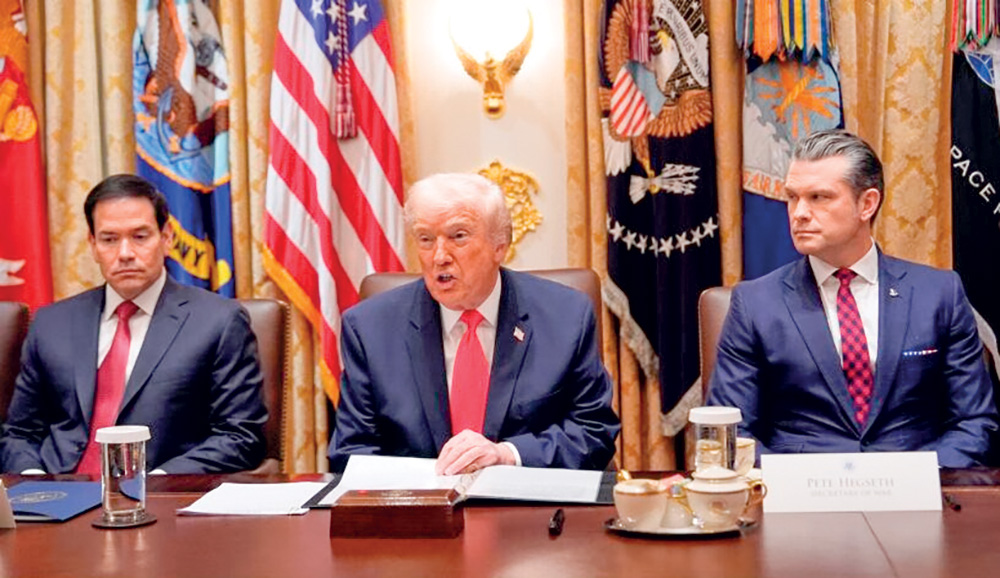
President Trump is expected to close the deal on the Ukraine crisis, as he may wish to concentrate his full strength on two issues: ongoing operations in Venezuela and the bolstering of Japan’s military capabilities as tensions between China and Japan over Taiwan rise. Trump can easily concede Ukraine to Putin and refocus on the Asia–Pacific and Latin America. This week, he once again spilled the beans in an interview with Politico, one of the most significant conversations ever conducted with him. When asked which country currently holds the stronger negotiating position, Trump bluntly asserted that there could be no question: it is Russia. “It’s a much bigger country. It’s a war that should’ve never happened,” he said, followed by his usual rhetoric.
Meanwhile, US allies that fail to adequately fund defence and shirk contributions to collective security will face repercussions, Secretary of War Pete Hegseth declared at the 2025 Reagan National Defense Forum in Simi Valley, California. Hegseth singled out nations such as South Korea, Israel, Poland, and Germany as “model allies” for increasing their commitments, contrasting them with those perceived as “free riders”. The message was unmistakably Trumpian: partnerships are conditional, favourable only to countries that “help themselves” before asking anything of Washington.
It is in this context that it becomes essential to examine the Trump administration’s National Security Strategy, issued last week, in order to consider how it differs from previous strategies and where it may intersect with current US military practice.
Trump’s 2025 National Security Strategy is not merely another iteration of the familiar doctrine of American primacy; it is a radical reorientation of how the United States understands itself, its sphere of influence, and its role in the world. The document begins uncompromisingly: “The purpose of foreign policy is the protection of core national interests; that is the sole focus of this strategy.” It is the bluntest opening in any American NSS since the document became a formal requirement in 1987. Whereas previous strategies—from Obama to Biden—wrapped security in the language of democracy promotion and multilateralism, Trump’s dispenses entirely with the pretence of universality. What matters are American interests, defined narrowly, almost corporately, as though the United States were a shareholder entity rather than a global hegemon.
It is here that the ghost of Senator William Fulbright quietly enters, warning in 1966 that “The arrogance of power… the belief that we are uniquely qualified to bring order to the world, is a dangerous illusion.” Fulbright’s admonition was directed at the hubris of Vietnam-era expansionism, yet it resonates with uncanny force in relation to Trump’s revived hemispheric ambitions. For despite Trump’s anti-globalist posture, his strategy asserts a unique American role in determining events across two oceans and within an entire hemisphere. The arrogance may simply be wearing a new mask.
Nowhere is this revisionist spirit more vivid than in the so-called “Trump Corollary to the Monroe Doctrine”, perhaps the most controversial American hemispheric declaration since Theodore Roosevelt’s time. The 2025 NSS states without hesitation that “The United States will reassert and enforce the Monroe Doctrine to restore American preeminence in the Western Hemisphere.” Yet unlike Roosevelt, who justified intervention as a form of pre-emptive stabilisation, Trump wraps his corollary in the language of sovereignty and anti-globalism. The hemispheric message is not simply that outside powers must stay out; it is that the United States will decide what constitutes legitimate governance in the region and deny “non-Hemispheric competitors the ability to position forces or other threatening capabilities… in our Hemisphere”.
This wording alone has far-reaching implications for Venezuela, where US forces recently seized a sanctioned supertanker as part of an escalating confrontation with the Maduro government. Maduro, emboldened by support from Russia, Iran, and China’s so-called shadow fleet, frames Trump’s enforcement actions as piracy. But for Trump, this is precisely the point: a demonstration of restored hemispheric authority. In that sense, the 2025 NSS may be the first strategic document in decades to explicitly set the stage for sustained coercive operations in Latin America. The NSS promises “a readjustment of our global military presence to address urgent threats in our Hemisphere.” “Urgent threats” is vague, but in practical military planning, vagueness functions as a permission slip. It is not difficult to see how a state accused of “narco-terrorism” or “crimes against humanity” could be fitted into the category.
The return to hemispheric dominance is paired with a targeted shift in alliance politics. Trump makes it clear that the United States is finished subsidising alliances that do not directly strengthen American security. The NSS lays out the philosophy succinctly: “The days of the United States propping up the entire world order like Atlas are over.” This is a direct repudiation of the language found in Obama’s 2015 NSS, which emphasised that American leadership was indispensable to global stability. Trump rejects that premise outright. Leadership, in his framing, is merely leverage. Allies who fail to meet burden expectations will lose access, influence, and potentially even protection. Nowhere is this more evident than in the push for extraordinary defence spending among NATO allies: “President Trump has set a new global standard with the Hague Commitment… pledging NATO countries to spend 5 percent of GDP on defence.”
In turn, US disengagement from Europe becomes easier to justify. While Trump speaks of “negotiating an expeditious cessation of hostilities in Ukraine”, it requires little sophistication to decode this as a form of managed abandonment—an informal concession that Russia’s negotiating position is stronger, as Trump told Politico. Ukraine may well become a bargaining chip in the trade-off between strategic theatres: Europe shrinks, Asia and Latin America expand. The NSS’s emphasis on Japan, Taiwan, and China is markedly sharper than in 2017.
China looms over the 2025 NSS like an obsession, mentioned over twenty times, not merely as a competitor but as a driving force shaping American policy. Every discussion of technology, alliances, or regional security is filtered through Beijing’s shadow, as if US strategy exists solely to counter China. The strategy’s relentless focus risks turning global priorities into a theatre of paranoia, where the United States reacts constantly, defined less by its own interests than by fear of what China might do next.
It is equally striking that, just nine days after Cyclone Ditwah, the US Indo-Pacific Command deployed two C130 aircraft—capable of landing at only three locations in Sri Lanka, well away from the hardest-hit areas—and orchestrated a highly choreographed media performance, enlisting local outlets and social media influencers seemingly more concerned with flaunting American boots on the ground than delivering “urgent” humanitarian aid. History shows this is not unprecedented: US forces have repeatedly arrived under the banner of humanitarian assistance—Operation Restore Hope in Somalia (1992) later escalated into full security and combat operations; interventions in Haiti during the 1990s extended into long-term peacekeeping and training missions; and Operation United Assistance in Liberia (2014) built a lasting US operational presence beyond the Ebola response.
Trump’s NSS, meanwhile, states that deterring conflict in East Asia is a “priority”, and that the United States seeks to ensure that “US technology and US standards—particularly in AI, biotech, and quantum computing—drive the world forward.” Combined with heightened expectations of Japan, which is rapidly rearming, Trump’s strategic map shows a clear preference: if Europe cannot or will not defend itself, Asia might.
What makes the 2025 NSS uniquely combustible, however, is the combination of ideological framing and operational signalling. Trump explicitly links non-interventionism, long a theme of his political base, to the Founders’ moral worldview. He writes that “Rigid adherence to non-interventionism is not possible… yet this predisposition should set a high bar for what constitutes a justified intervention.”
The Trump NSS is both a blueprint and a warning. It signals a United States abandoning the liberal internationalist project and embracing a transactional, hemispherically focussed, sovereignty-first model. It rewrites the Monroe Doctrine for an age of great-power contest, but in doing so resurrects the very logics of intervention that past presidents have regretted. And in the background, as Trump weighs the cost of Ukraine against the allure of a decisive posture in Asia and the Western Hemisphere, the world is left to wonder whether this new corollary is merely rhetorical theatre or the prelude to a new era of American coercive power. The ambiguity is deliberate, but the direction of travel is unmistakable.
[Correction: In my column last week, I incorrectly stated that India–Russia trade in FY 2024 25 was USD 18 billion; the correct figure is USD 68.7 billion, with a trade deficit of about USD 59 billion. Similarly, India recorded a goods trade surplus of around USD 41.18 billion with the US, not a deficit of USD 42 billion, with exports of USD 86.51 billion and imports of USD 45.33 billion. Total remittances to India in FY 2024 25 were roughly USD 135.46 billion, including USD 25–30 billion from the US. Apologies for the error.]
by Nilantha Ilangamuwa
Features
MEEZAN HADJIAR

selfmade businessman who became one of the richest men in the Central Province
I am happy that a book about the life and contribution of Sathkorale Muhamdiramlagedara Segu Abdul Cader Hajiar Mohamed Mohideen better known as Meezan Hadjiar or Meezan Mudalali of Matale [1911—1964] written by Mohammed Fuaji -a former Principal of Zahira College Matale, has now been published by a group of his admirers and relatives. It is a timely addition to the history of Matale district and the Kandyan region which is yet to be described fully as forming a part of the modern history of our country. Coincidentally this book also marks the centenary of Meezan Hadjiars beginning of employment in Matale town which began in 1925.
Matale which was an outlier in the Kandyan Kingdom came into prominence with the growth of plantations for coffee and, after the collapse of the coffee plantations due to the ‘coffee blight’ , for other tree crops . Coffee was followed by the introduction of tea by the early British investors who faced bankruptcy and ruin if they could not quickly find a substitute beverage for coffee.They turned to tea.
The rapid opening of tea plantations in the hill country demanded a large and hardworking labour force which could not be found domestically. This led to the indenturing of Tamil labour from South India on a large scale. These helpless workers were virtually kidnapped from their native villages in India through the Kangani system and they were compelled to migrate to our hill country by the British administration .
The route of these indentured workers to the higher elevations of the hill country lay through Matale and the new plantation industry developed in that region thereby dragging it into a new commercial culture and a cash economy. New opportunities were opened up for internal migration particularly for the more adventurous members of the Muslim community who had played a significant role in the Kandyan kingdom particularly as traders,transporters,medical specialists and military advisors.
Diaries of British officials like John D’oyly also show that the Kandyan Muslims were interlocutors between the Kandyan King and British officials of the Low Country as they had to move about across boundaries as traders of scarce commodities like salt, medicines and consumer articles for the Kandyans and arecanuts, gems and spices for the British. Even today there are physical traces of the ‘’Battal’’or caravans of oxen which were used by the Muslims to transport the above mentioned commodities to and from the Kandyan villages to the Low country. Another important facet was that Kandyan Muslims were located in villages close to the entrances to the hill country attesting to their mobility unlike the Kandyan villagers.
Thus Akurana, Galagedera, Kadugannawa, Hataraliyadde and Mawanella which lay in the pathways to enter the inner territory of the Kings domain were populated by ‘Kandyan Muslims’ who had the ear of the King and his high officials. The’’ Ge’’ names and the honorifics given by the King were a testament to their integration with the Sinhala polity. Meezan Hadjiars’’ Ge ‘‘name of Sathkorale Mohandiramlage denotes the mobility of the family from Sathkorale, an outlier division in the Kandyan Kingdom, and Mohandiramlage attests to the higher status in the social hierarchy which probably indicated that his forebears were honoured servants of the king.
Meezan Hadjiar [SM Mohideen] was born and bred in Kurugoda which is a small village in Akurana in Kandy district. He belonged to the family of Abdul Cader who was a patriarch and a well known religious scholar. Cader’s children began their education in the village school but at the age of 12 young Mohideen left his native village to apprentice under a relative who had a business establishment in the heart of Matale town which was growing fast due to the economic boom. It must be stated here that this form of ‘learning the ropes’ as an apprentice’was a common path to business undertaken by many of the later Sri Lankan tycoons of the pre-independence era.
But he did not remain in that position for long .When his mentor failed in his business of trading in cocoa, cardamoms, cloves and arecanuts and wanted to close up his shop young Mohideen took over and eventually made a great success of it. His enterprise succeeded because he was able to earn the trust of both his buyers and sellers. He befriended Sinhalese and Tamil producers and the business he improved beyond measure took on the name of Meezan Estates Ltd [The scales] and Mohideen soon became famous as Meezan Mudalali – perhaps the most successful businessman of his time in Matale. He expanded his business interests to urban real estate as well as tea and rubber estates. Soon he owned over 3,000 acres of tea estates making him one of the richest men in the Central Province.
With his growing influence Meezan spent generously on charitable activities including funding a water scheme for his native village of Kurugoda also serving adjoining villages like Pangollamada located in Akurana. He also gave generously to Buddhist causes in Matale together with other emerging low country businessmen like Gunasena and John Mudalali.
Matale was well known as a town in which all communities lived in harmony and tended to help each other. As a generous public figure he became strong supporter of the UNP and a personal friend of its leaders like Dudley Senanayake and Sir John Kotelawela. UNP candidates for public office-both in the Municipality and Parliament were selected in consultation with Meezan who also bankrolled them during election time. He himself became a Municipal councillor. The Aluvihares of several generations had close links with him. it was Meezan who mentored ACS Hameed – a fellow villager from Kurugoda – and took him to the highest echelons of Sri Lankan politics as Minister of Foreign Affairs. He was a supporter and financier of the UNP through thick and thin.
Though his premature death at the age 53 in 1965 saved him from the worst political witch hunts under SWRD Bandaranaike who was his personal friend it was after 1970 and the Coalition regime that Meezan’s large family were deprived of their livelihood by the taking over of all their estates. Fortunately many of his children were well educated and could hold on till relief was given by President Premadasa despite the objections of their father’s erstwhile protégé ACS Hameed who surprisingly let them down badly.
It is only fitting that we, even a hundred years later, now commemorate a great self made Sri Lankan business magnate and generous contributor to all religious and social causes of his time. His name became synonymous with enterprise in Matale – a district in which I was privileged to serve as Government Agent in the late sixties.He was a model entrepreneur and his large family have also made outstanding contributions to this country which also attest to the late Meezan Hadjiars foresight and vision of a united and prosperous Srilanka.
by SARATH AMUNUGAMA.
-
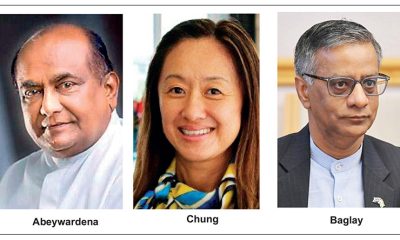
 Features5 days ago
Features5 days agoFinally, Mahinda Yapa sets the record straight
-

 News7 days ago
News7 days agoOver 35,000 drug offenders nabbed in 36 days
-
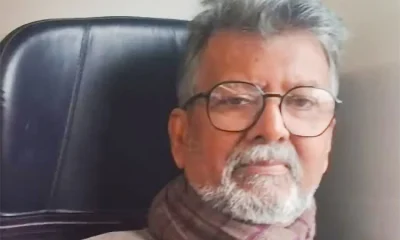
 News6 days ago
News6 days agoCyclone Ditwah leaves Sri Lanka’s biodiversity in ruins: Top scientist warns of unseen ecological disaster
-

 News7 days ago
News7 days agoRising water level in Malwathu Oya triggers alert in Thanthirimale
-
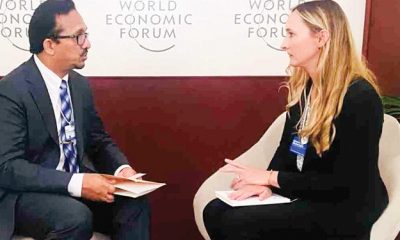
 Features5 days ago
Features5 days agoHandunnetti and Colonial Shackles of English in Sri Lanka
-
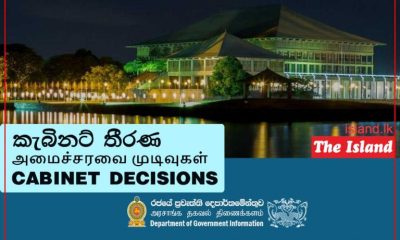
 Business3 days ago
Business3 days agoCabinet approves establishment of two 50 MW wind power stations in Mullikulum, Mannar region
-

 Business7 days ago
Business7 days agoSri Lanka betting its tourism future on cold, hard numbers
-

 News7 days ago
News7 days agoJetstar to launch Australia’s only low-cost direct flights to Sri Lanka, with fares from just $315^














